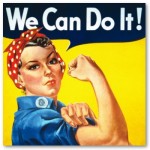 In my latest posting of my newfound Neflix documentary watching I choose to watch Freakonomics. I am fascinated with Levitt’s concepts and numbers crunching analysis. This is rather funny to me because I am far from a numbers type person. However, he seems to tap into something that I believe for many of my church and cultural observations and that is that the numbers are never quite what they seem or presented to us. More times than not our conventional look of cause & effect on actions of our world are probably not what they are.
In my latest posting of my newfound Neflix documentary watching I choose to watch Freakonomics. I am fascinated with Levitt’s concepts and numbers crunching analysis. This is rather funny to me because I am far from a numbers type person. However, he seems to tap into something that I believe for many of my church and cultural observations and that is that the numbers are never quite what they seem or presented to us. More times than not our conventional look of cause & effect on actions of our world are probably not what they are.
As a documentary Freakonomics was entertaining in this way for me. One of the Feakonomics case studies that had me intrigued most was the reasoning for the drop in crime starting in the 90’s after huge rises in crime through the 70’s to 80’s. Government officials and experts were extolling practices of police practices, tougher sentencing, and a few other items. What was an interesting connection was that those couldn’t tell the whole story and the rest of the story was filled out by the passing of Roe vs Wade and the availability of abortions. This kept a generation of unwanted children from ever being born and the numbers fall into line of the drop of 20 something population who were the crime offenders at that point, but had huge statistical drops. Is it right? I’d like to think there is a lot of credibility to the whole thing.
As I work with my United Methodist church who is trying to label and build “vital” congregations I cannot help but wonder that the numbers are not what they seem. I do not have some great answer, but it feels that our metrics we measure our “vitality” is too conventional and not dynamic enough to represent what is truly going on.
One of the things that is commonly referenced is that the United Methodist Church is dying in America. The UMC’s heyday was the 1950’s and many times the church entity keeps trying to replicate that era.
 Was sitting in with Phyllis Tickle a few months back where she was going through her patterned history lessons of the faith and church. She had some interesting connections that in the 20th century at the break of the Great Depression and the start of the World War II for Americans the women took up the tools of the men’s trades and became the iconic “Rosie the Riveter.” The culture of Rosie was that they would go off to work becoming exhausted from a day of work and do what the man would do to unwind, stopping by the bar. When the war ended and the men came home Rosie went back to the daily duty of the home. She was left without something very important for her community. Rosie was left without a “third place.” The bar was the important “third place” for community for the group of men and ladies. However, for a group of ladies community was gone. So what became the new third place? The church?..
Was sitting in with Phyllis Tickle a few months back where she was going through her patterned history lessons of the faith and church. She had some interesting connections that in the 20th century at the break of the Great Depression and the start of the World War II for Americans the women took up the tools of the men’s trades and became the iconic “Rosie the Riveter.” The culture of Rosie was that they would go off to work becoming exhausted from a day of work and do what the man would do to unwind, stopping by the bar. When the war ended and the men came home Rosie went back to the daily duty of the home. She was left without something very important for her community. Rosie was left without a “third place.” The bar was the important “third place” for community for the group of men and ladies. However, for a group of ladies community was gone. So what became the new third place? The church?..
Maybe the boom of the United Methodist Church in the 50’s was less about the church’s evangelism and disciple making, but more about a sociological need for the ladies of the home to re-find community.